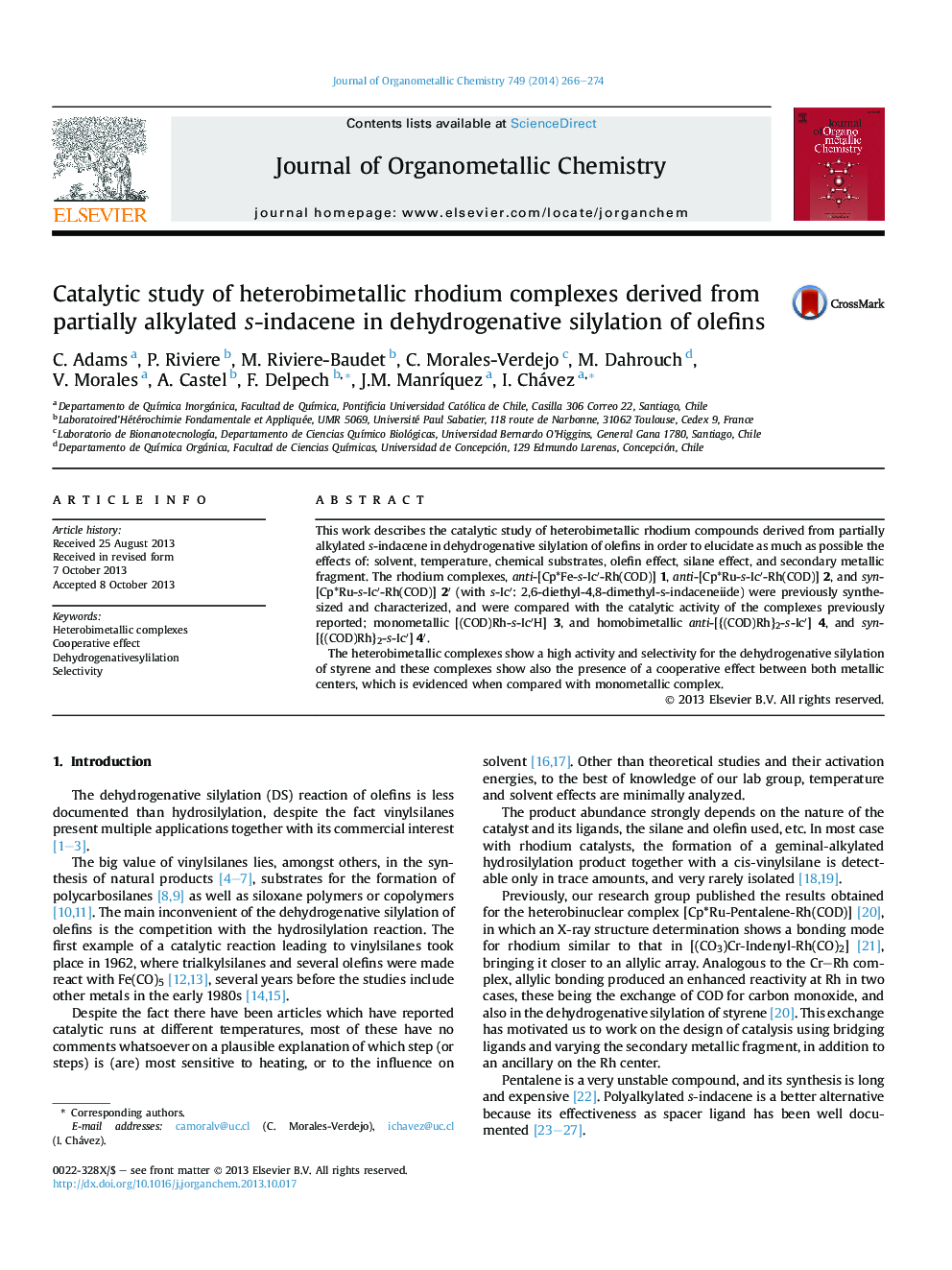| Article ID | Journal | Published Year | Pages | File Type |
|---|---|---|---|---|
| 1321363 | Journal of Organometallic Chemistry | 2014 | 9 Pages |
•We studied the catalytic behavior of heterobimetallic rhodium compounds.•The catalytic study was carried out in dehydrogenative silylation of olefins.•The complexes shown a high activity and selectivity for the DS of styrene.•The complexes shown a cooperative effect between both metallic centers.
This work describes the catalytic study of heterobimetallic rhodium compounds derived from partially alkylated s-indacene in dehydrogenative silylation of olefins in order to elucidate as much as possible the effects of: solvent, temperature, chemical substrates, olefin effect, silane effect, and secondary metallic fragment. The rhodium complexes, anti-[Cp*Fe-s-Ic′-Rh(COD)] 1, anti-[Cp*Ru-s-Ic′-Rh(COD)] 2, and syn-[Cp*Ru-s-Ic′-Rh(COD)] 2′ (with s-Ic′: 2,6-diethyl-4,8-dimethyl-s-indaceneiide) were previously synthesized and characterized, and were compared with the catalytic activity of the complexes previously reported; monometallic [(COD)Rh-s-Ic′H] 3, and homobimetallic anti-[{(COD)Rh}2-s-Ic′] 4, and syn-[{(COD)Rh}2-s-Ic′] 4′.The heterobimetallic complexes show a high activity and selectivity for the dehydrogenative silylation of styrene and these complexes show also the presence of a cooperative effect between both metallic centers, which is evidenced when compared with monometallic complex.
Graphical abstractThis work describes the catalytic study of heterobimetallic rhodium in dehydrogenative silylation of olefins. These compounds show a high activity and selectivity for the dehydrogenative silylation of styrene. The complexes show also the presence of a cooperative effect between both metallic centers, which is evidenced when compared with monometallic complex.Figure optionsDownload full-size imageDownload as PowerPoint slide
